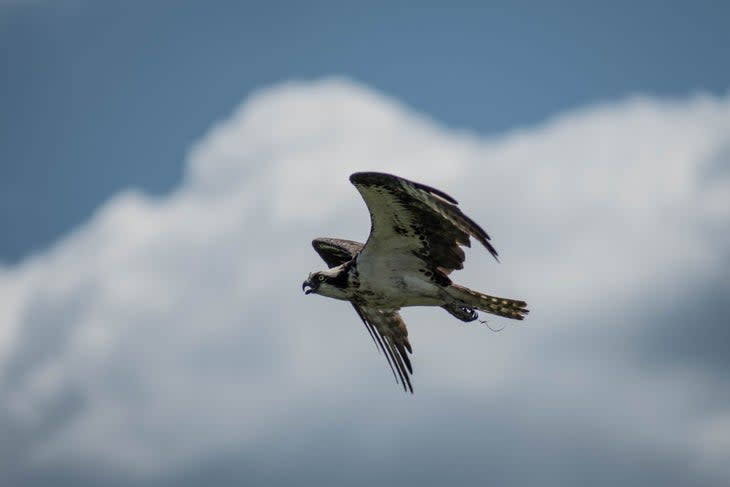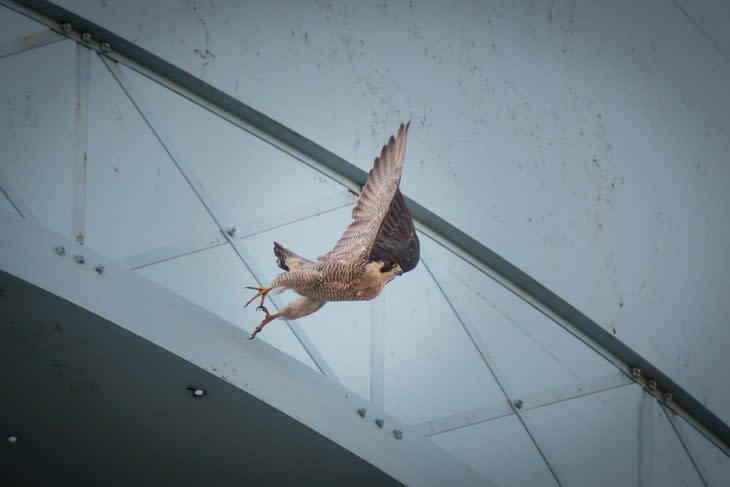Here’s an Effective Way To Identify Hawk Species: Think Of Them As Ultrarunners
This article originally appeared on Trail Runner
On a perfect day at Hawk Mountain in Kempton, Pennsylvania, with the air warming after the first cold snap, you might see hundreds of raptors flying over the hills. This mountain faces southeast and rises abruptly from the foothills. Its positioning helps create thermals and updrafts that boost the raptors along their journey. The morning sun is their starting gun, ridgelines are their race courses, and I am just as thrilled seeing raptors funnel through the air as I am watching runners burst out of the starting chute at UTMB.
In early to mid-October, thousands of raptors start their ultra-distance journeys north-to-south along the Appalachians and the Rockies, on an annual migration to their wintering grounds in the southern US, Central America, and South America. The Osprey, a medium-sized fish eagle found along waterways throughout the US, migrates as far as Venezuela, while some Peregrine Falcons fly 7,500 miles, from the Arctic to Argentina, in one migration period.

Conservation organizations like Hawkwatch International use this mass migration to conduct studies on raptor populations, teach folks about raptors and conservation, and enjoy the natural phenomenon.
Trail runners are well-positioned to be on the forefront of raptor migration monitoring. Early morning mountaintops, for example, are prime places to see the migration. The air currents carry the birds of prey high into the sky, allowing them to soar for miles before catching another upward current and continuing. Riding the ever changing flow of air means they use much less energy than those of us who have to swing our legs to travel.
RELATES: The Backyard Stories
Hawk Mountain, Pennsylvania, is a particularly good place to see raptors, but any place where the mountains meet the foothills can be your own spot to witness this migration. So if you're out with a local conservation organization or just running trails in the early autumn mountains, here are some ways to help remember and identify raptors.
Raptors as Runners
In an area with tall cliff faces and rocky outcroppings, you might see Peregrine Falcons shooting down mountain ranges. They are like Killian Jornet moving at nearly incomprehensible speeds. Look for their angular, pointy wings, small head relative to their body, black crown, and vanilla bean ice cream underside.

Near bodies of water, you might see Bald Eagles, sort of like Courtney Dauwalter: iconic, strong, and inspiring in their movements. Bald Eagles have a large flat wingspan with fingerlike primary feathers. Their dark body contrasts with their white heads and tail.
If you are lucky, in densely wooded mountains you could see relentless Goshawks, just like Clare Gallagher. These birds have a distinct flight pattern that distinguishes them from other raptors. They flap, flap, glide when others just glide. Look for their long tails relative to their body length, shorter wings, gray breasts with short black stripes, red eyes, and a fire inside them.
In the West, you may see Golden Eagles, like Jim Walmsley, effortlessly moving through space and time. Their six-foot golden brown wings are flat and rounded when viewed from the bottom. No other bird is that color and that big in North America.
RELATED: Watch Jim Walmsley Fly Through the Grand Canyon
You are bound to see the Red-tailed Hawk on the mountain or on the car ride home. They usually have a four-foot wingspan that is white underneath. Their secondary feathers have distinct black lines that run parallel to their wings. Their distinguishing feature is their red tail which can be seen from above or below. They are found all across North America and often live and hunt near urban centers. These birds are much like the rest of us. They are the average runner getting after it, day in, day out, making the most of their surroundings.
So this fall, when your legs are burning, your heart is pounding, and perhaps you can't remember why you even like running up mountains anymore, don't forget to look up. Because maybe you'll see one raptor, or one hundred soaring, darting, or flapping over the mountains, encouraging you to keep moving, to keep flying.
For exclusive access to all of our fitness, gear, adventure, and travel stories, plus discounts on trips, events, and gear, sign up for Outside+ today.

